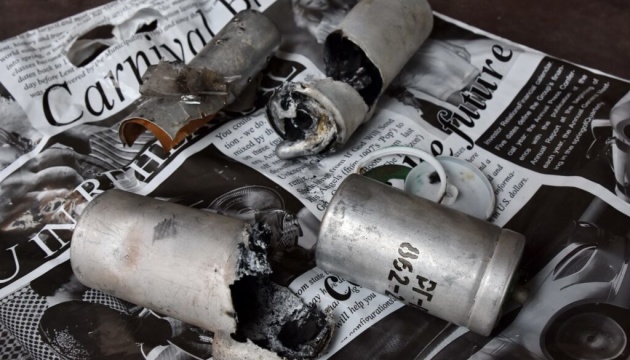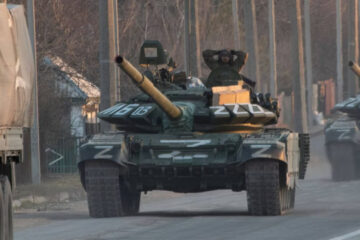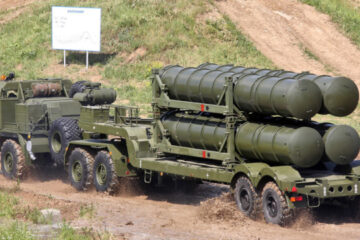
The use of banned substances by the Russian military has become systematic: in particular, the enemy uses chemicals to “smoke” Ukrainian soldiers out of their shelters almost every day.
This was stated by Serhiy Skibchyk, head of the press service of the 65th separate mechanized brigade, in an interview with the National Union of Journalists.
According to the NUJU, according to the military of the 65th Brigade, the use of chemical weapons by Russian troops is not an isolated incident, but a systematic practice: the enemy uses chemicals mainly to identify Ukrainian positions. Poisonous gases, whatever they are, force the military to leave their shelters, after which they are attacked by artillery or drones, the publication says.
“From this point of view, Russians do not have to use dangerous poisonous substances, and often pepper mixtures that irritate the respiratory tract, mucous membranes, and eyes are enough. Or even ordinary smoke, which makes it impossible to breathe and forces you to leave the shelter. And as soon as you leave the shelter, i.e. get out of the dugout, you are either spotted through a thermal imager or visually by Russian reconnaissance vehicles and start dropping ammunition on you with kamikaze drones, or adjusting artillery and mortars,” noted Skibchyk.
According to him, the enemy uses such means to “smoke out” Ukrainian fighters from their hiding places almost every day. “Unfortunately, not everything can be documented with proper evidence. But we had from five to 46 confirmed cases of defeat per month,” said the military.
He added that it is important to distinguish between different types of chemicals used by the enemy. What the injured soldiers sometimes have to deal with is clearly something more serious than a pepper mixture, Skibchyk said.
As noted, during a visit to the brigade, British journalist Maxim Tucker, author of a large-scale investigation into the use of banned chemical weapons by Russian troops against Ukrainian defenders for The Times, personally spoke with the military who suffered from the effects of chemicals. One of the soldiers with the call sign “Fartovyi” described the serious consequences of the injury, which led to hospitalization: he had a temperature of 40 degrees for a week and coughed up blood.
“This is definitely not pepper gas. It’s impossible to say what type of chemical was used then or there. The tests are done by doctors. And the markings on the grenades do not clearly indicate that they contain sarin or chloropicrin. This makes it very difficult to quickly determine which antidote is needed. As for the remains of the grenades, they are being transferred to the SSU, where they will be examined by experts in the relevant laboratories,” noted Skibchyk.
Particularly alarming is the fact that the Russians are using not only old Soviet stockpiles of chemical agents, but also newly manufactured chemical munitions. On one of the seized grenades, the military showed the marking “24”, which indicates that it was produced in 2024, the NUJU notes.
They add that gas masks remain the only available means of protection against chemical attacks. “Initially, we had Soviet-type gas masks, and now we are getting NATO-type gas masks. However, the effectiveness of these protective equipment is limited, as it is impossible to apply appropriate antidotes without knowing the specific substance,” Skibchyk said.
According to the military, collecting evidence of the use of chemical weapons is a complex and time-consuming process. Physical evidence must be collected to confirm each case of chemical weapons use. “Evidential confirmation is when it is possible to take out the remains or fragments of a grenade, or the grenade itself with the marking that it is poisonous chemicals,” explained Skibchyk.
According to the military, the problem of the use of chemical weapons by Russian troops is gradually becoming a matter of public discussion. If earlier such cases remained mostly unproven, now the information appears in official reports of the General Staff and the Ministry of Defense, the NUJU states. They also express hope that Maxim Tucker’s investigation for The Times will be an important step in documenting Russian war crimes at the international level and drawing the world’s attention to Russia’s systematic violations of the rules of war.
As reported, according to the Ministry of Foreign Affairs of Ukraine, in the period from February 2023 to February 2025, 6,129 cases of the use of ammunition containing hazardous chemicals by the Russian occupiers were documented. The international community must hold Russia accountable for violating its obligations under the Chemical Weapons Convention.
Photo: Andriy Andriyenko / 65th Separate Mechanized Brigade
Source: Military: Russians use chemicals almost daily to "smoke out" Ukrainian fighters from shelters



